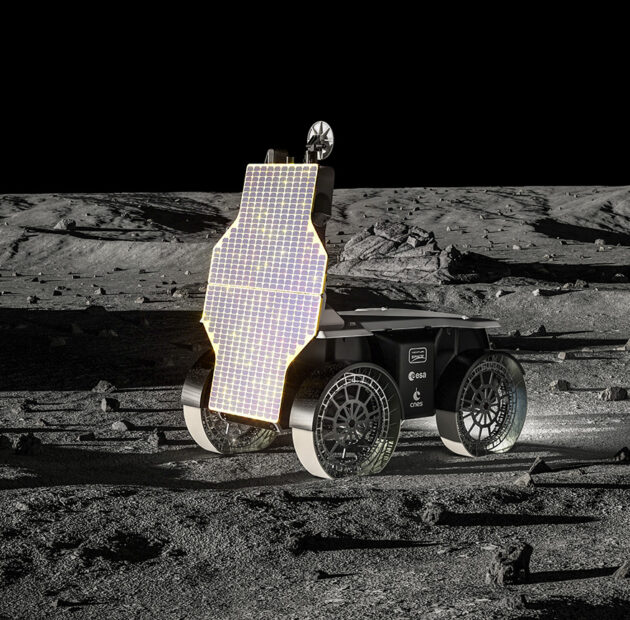A project led by Venturi Space France backed by ESA and CNES
Venturi Space France will oversee Mona Luna’s development and space qualification from its base in Toulouse, coordinating every aspect of the process: onboard electronics, avionics, space-to-ground links, energy management systems, assembly, final integration and acceptance testing in readiness for space flight. All with one clear objective: to deploy Mona Luna at the Moon’s South Pole by 2030.
The European Space Agency is supporting Venturi Space’s efforts to design and develop the critical technologies required for a large lunar rover, capable of surviving multiple lunar nights. ESA’s support validates Venturi Space’s approach and highlights its expertise. The project will draw on the experience acquired from the programmes to develop the Flio and Flex rovers under a strategic partnership with US-based company Venturi Astrolab, Inc. Venturi Space is currently designing and building the hyper-deformable wheels that will be fitted to those vehicles, along with the associated electrical systems (in Switzerland) and high-performance batteries (in Monaco). The peripheral layers of the wheels include metallic materials, hyper-elastic polymers and composites. The latter are made up of proprietary thermosetting resins and a combination of hundreds of millions of reinforcing fibres.

Using technology made in Europe
Mona Luna is designed to be carried into space by the Ariane 6.4 launch system and landed on the Moon’s surface by the European Argonaut lunar lander, while the rover itself will be equipped with a robotic arm to handle scientific instruments and payloads. It will be:
- electrically powered;
- recharging via solar panels;
- designed to move autonomously;
- equipped with 3 high-performance batteries;
- capable of carrying a wide range of payloads;
- designed to survive multiple lunar nights;
- capable of a top speed of 20 km/h;
- designed to weigh a total of 750 kg.
The rover could also be used in an emergency to carry an astronaut in difficulty, as envisaged by the ESA and CNES in their feasibility studies.
A clear commercial purpose
Mona Luna’s maiden mission will focus on purely scientific applications, but future deployments could be organised to meet demand from the European private sector for a variety of purposes, including carrying payloads to the South Pole, exploiting lunar resources (such as helium-3) in situ, or even public outreach campaigns. This approach will help establish a sustainable long-term economic model for the rover, in much the same way as the early development of terrestrial mobility.
Gildo Pastor, president of Venturi Space, stated: “I’m still an explorer, first and foremost. Space is a new frontier, and Mona Luna is how we are actually going to broach it. Alongside Europe, we aim to build an autonomous lunar exploration capability to meet the scientific, economic and strategic challenges of tomorrow.”
“Our primary focus is to make ourselves fully available to the ESA and European national space agencies. With Mona Luna, we aim to deliver major technological breakthroughs that will pave the way for extended lunar mobility,” added Dr Antonio Delfino, director of space affairs at Venturi Space.





 Lu public network security: 37140202000173
Lu public network security: 37140202000173



